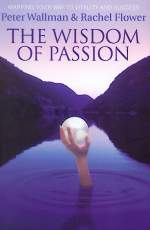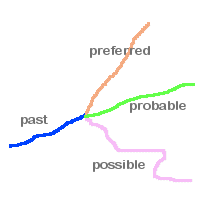
This has been a conversation that has been on my mind for a while, and I guess by writing about it, I will have the chance over time to reflect about its meaning.
It was my third day as an "art teacher" in a primary school - both new contexts for me. And I had seized the (very beautiful spring) day and decided to can my planned activity and do some "plein air" painting on the river foreshore. This was now the afternoon group and they were settling down, finding rocks to sit on, and solving the problem of the wind blowing away their paper.
But one boy, Mark, could not settle down. His back was to the glorious view. As I walked around helping everyone to get started, and meeting the demands for this or that, I would go back to Mark and make a suggestion that could orient him to the task. The third time, when I had settled enough to actually look at him, I realised that something was up. Ding dong, Sue, what took you so long!
"Something's up?" I asked, "This is not your normal self, is it?" He hummed and hahed, and then gradually the story came out. "I got really angry at lunch time, I yelled at some boys and I chased them around the oval." Mark was such a quiet and considerate boy that this really surprised me. I dug deeper, asking what had caused it. Yes the boys had said something unforgivable but what Mark was most concerned about was what he had done in response. "Are you feeling bad because you don't like who you are when you did that?" I asked. He nodded, relieved. "That's it, I don't like who I am when I am angry."
We were quietly talking, but there were other students who seemed to be quietly listening in. Usually they were very chatty. Someone else says "I get angry too, and I don't feel good about it." I nod and look back at Mark. "Do you get angry at other times and what do you do about it?" He tells me that things make him angry and when this happens he bangs his head on the table to try to make it stop. And when people upset him, he watches violent films and sees people getting shot up, imagines that is the person who hurt him, and then he begins to feel better.
The previous week I had blindfolded the students and took them outside, getting them to imagine the colour of the wind, the smells and the sounds etc, and to sit quietly and just see what images would emerge in their mind's eye. Mark had told me he saw eyes and drew a picture of an almost devil character with "evil" glowing red eyes. I now asked him what that picture was about. He said, "I think it was me. I don't like that person."
It reminded me of my husband when he was at primary school and I told Mark the story. That Roger had thrown a plate at his brother in anger and it smashed against the wall. It so frightened him that he had decided never to feel or express anger again. Mark and the others started talking. Was it really possible to stop feeling anger? We discussed if anger can be a good thing - gets things done, or things changed. What happens if you suppress it? What different strategies might people use to manage it well? "We need a process where at the end we resolve it so we can like ourselves again," I said.

I thought about it, and asked Mark whether he would like to draw a picture that could express his anger and if so what he would put in it. He said he would have a sword and he would be trying to kill his opponent who would be all black. "What sort of sword," I asked, "what sort of movies do you watch." He said he loved Star Wars. So I suggested he use a light sabre. "What colour will it be?" As he drew the picture I said to him, "You know, that light sabre could be more than just a tool for killing - it could emit a whole lot of light and perhaps it could help both you and your oppenent to be better people, to heal the situation." Mark changed from his dark chalks and started drawing in swirling colours of light wrapping himself and his opponent.
Later as we walked back to school, Mark said to me, "You know Sue that actually worked. When I started my picture I was angry and hated myself. Afterwards I actually liked myself again. I liked sending bright colours to my opponent and imagining them helping him to be a better person as well."
I guess there are a number of interesting facets to this story:
How important is it for me as a teacher to create situations which give students space to have such conversations and explorations? How much does my own ability to be "present" in the moment enable me to tune into what is needed?
To what extent are students of this age developing a sense of what "integrity" means to them? Are they creating an inner barometer that helps them find a sense of what is "home" - the quality of being that they aspire to have - the "highest thought"? How often is this a topic for conversation? How can we help students to name this, and "be at home" here?
Perhaps this is a combination of emotional literacy and spiritual literacy. Emotional literacy enables us to name our state with honesty; it gives us the tools to talk about our emotions and to understand the dynamics of relationships. Spiritual literacy helps us aspire to what is deeply human, living the "highest thought", experiencing compassion for self and others, enabling forgiveness and transformation.
It is conversations like this that remind me that I am not just teaching about things, or providing skills or tool-kits - I am a teacher of human beings, helping them (and myself) to find our deep humanity.

.jpg)



